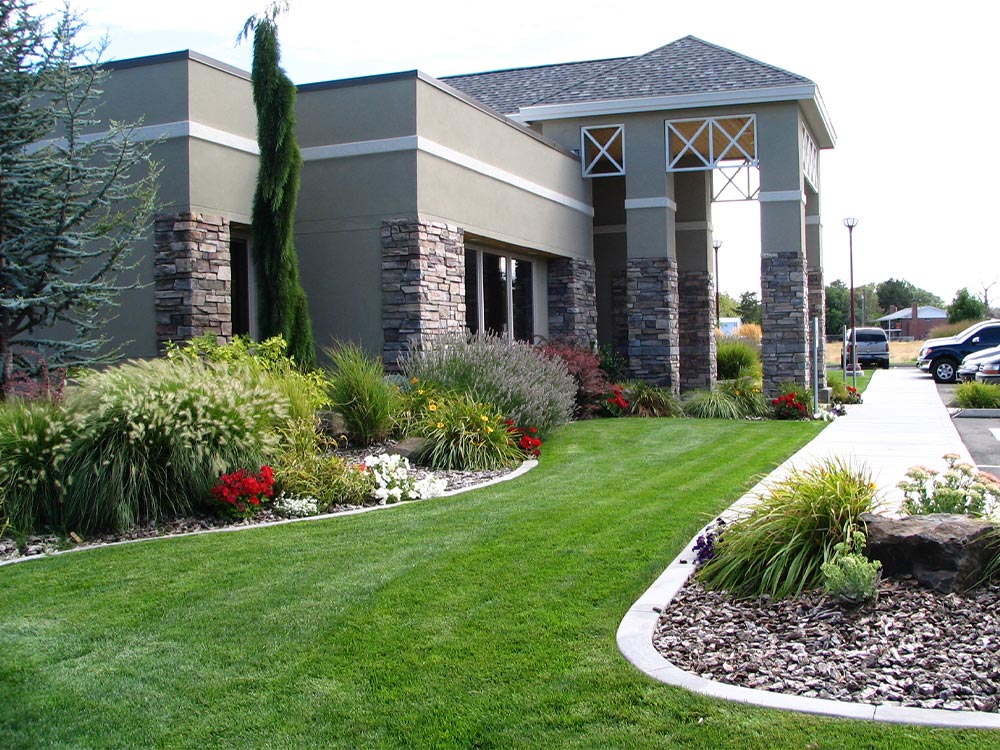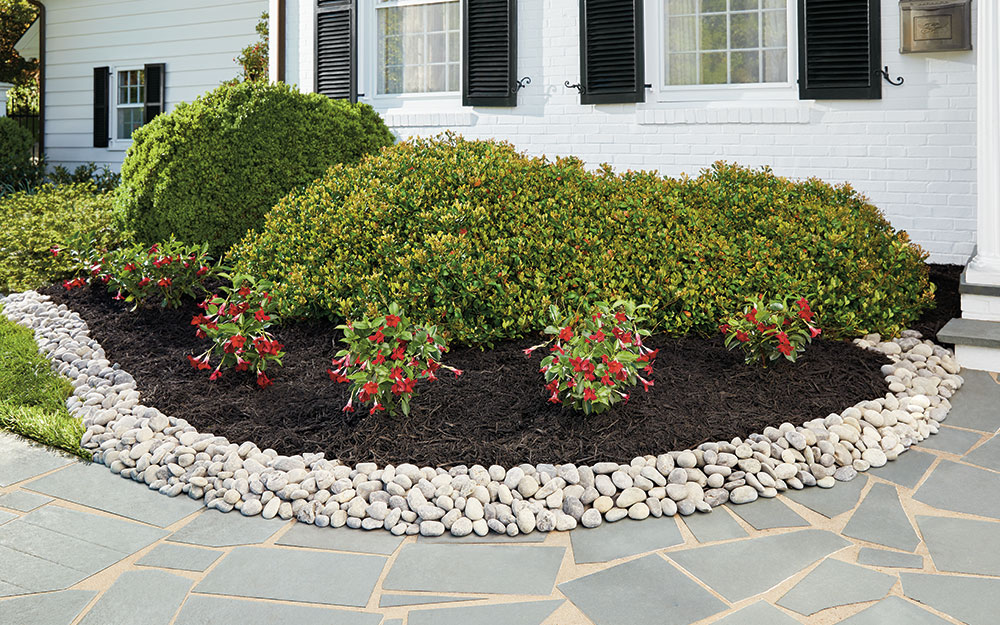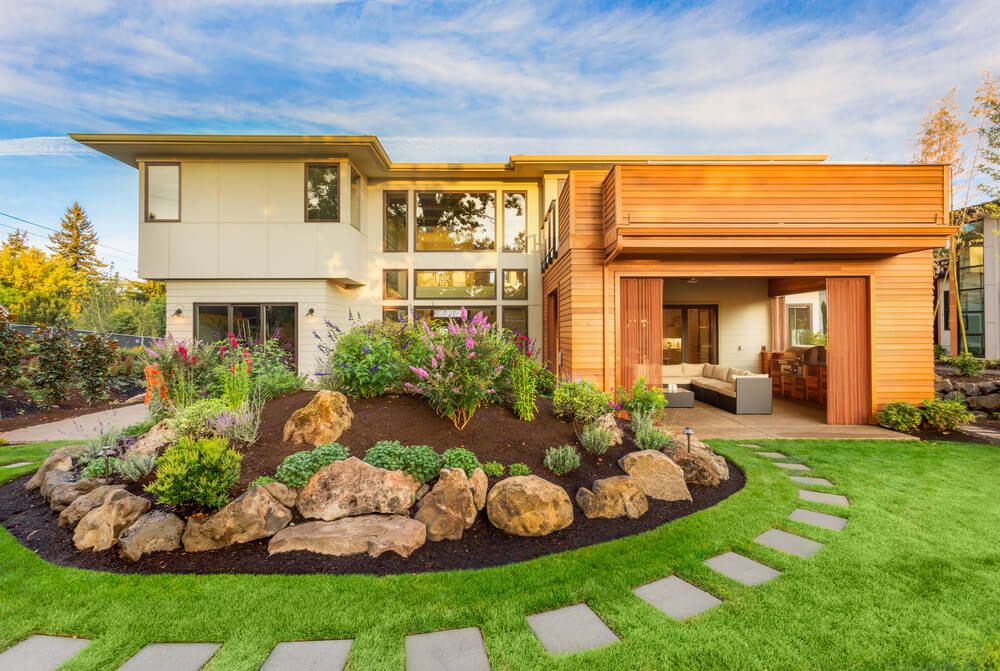Premier Landscaping Company Jacksonville: Exceptional Services for Beautiful Gardens
Premier Landscaping Company Jacksonville: Exceptional Services for Beautiful Gardens
Blog Article
Elevate Your Home's Aesthetic With Sustainable Landscape Design Styles and Eco-Friendly Practices

Benefits of Sustainable Landscaping
Carrying out lasting landscaping practices not just preserves natural sources however likewise promotes biodiversity and enhances total ecological wellness. One substantial benefit is the reduction of water consumption via the usage of drought-resistant plants, rainfall gardens, and efficient watering systems.
In addition, sustainable landscaping can improve dirt health and wellness by lessening making use of chemical fertilizers and pesticides, thus creating a healthier environment for plant growth and advantageous dirt microorganisms. This, consequently, improves the general durability of the landscape to endure ecological stressors and climate adjustment impacts - landscaping company Jacksonville. Furthermore, lasting landscape design techniques can draw in varied wild animals, including pollinators like bees and butterflies, promoting a much more balanced and dynamic ecosystem within the building
Incorporating Indigenous Plants
To build on the advantages of lasting landscaping, a strategic concentrate on integrating native plants can better enhance environmental durability and promote biodiversity within the landscape. Native plants are types that normally occur in a particular area and have evolved to thrive in the neighborhood environment, dirt conditions, and environment. By consisting of native plants in landscaping designs, residential property proprietors can minimize water usage, lessen the demand for chemical pesticides and fertilizers, and sustain the neighborhood wildlife population.
Including indigenous plants additionally aids in preserving the unique personality and identification of a region's flora. These plants commonly need less upkeep when established, making them a affordable and sustainable landscaping option in the future. Furthermore, indigenous plants can draw in native pollinators like butterflies and , contributing to the total wellness of the environment.
When choosing indigenous plants for landscaping jobs, it is essential to pick types that are well-suited to the details environmental problems of the site. Consulting with neighborhood baby rooms or arboretums can supply useful guidance on choosing the best indigenous plants for a specific area. By integrating indigenous plants into landscaping layouts, home proprietors can develop attractive, sustainable outside rooms that profit both the atmosphere and the area.

Water Preservation Techniques
Efficient irrigation approaches play an important role in sustainable landscape design practices, making sure optimum water conservation efforts in exterior spaces. Carrying out strategies such as drip irrigation, rain harvesting, and clever irrigation systems can substantially reduce water wastefulness while preserving a healthy and balanced landscape. Leak watering supplies water directly to the origins of plants, decreasing dissipation and runoff. Rain collecting entails gathering rainwater from roof coverings and saving it for later usage in watering, lowering the reliance on community water sources. Smart irrigation systems utilize climate data and dirt dampness levels to change sprinkling schedules, stopping overwatering and advertising water effectiveness.
In addition to advanced watering approaches, xeriscaping is an additional water-saving landscaping method that focuses on using drought-resistant plants, compost, and reliable watering to produce a low-water landscape style - landscaping company Jacksonville. By selecting indigenous plants that are fit to the neighborhood environment and dirt conditions, homeowner can reduce go to website the demand for too much watering, inevitably saving water and promoting a lasting outside environment
Eco-Friendly Hardscaping Concepts
Enhancing exterior spaces with environment-friendly hardscaping features can add considerably to sustainable landscape design techniques. Opt for materials like redeemed wood, recycled concrete, Learn More or natural rock to decrease environmental effect when considering hardscaping components. These materials not only add an unique aesthetic appeal to your outside space however also minimize the demand for brand-new resources extraction.
Implementing permeable paving choices such as gravel or absorptive concrete can help in reducing water overflow and advertise groundwater recharge. These alternatives enable rain to permeate right into the ground, stopping disintegration and decreasing the burden on stormwater systems.
Incorporating indigenous plants right into hardscaping layouts can further enhance eco-friendliness by sustaining neighborhood wild animals and decreasing the requirement for excessive watering or chemical treatments. By incorporating eco-friendly wall surfaces or vertical yards, you can introduce more vegetation into urban settings, improving air quality and biodiversity.
Incorporating energy-efficient lighting, such as solar-powered LEDs, right into hardscaping styles can minimize power usage and lower your home's carbon impact. Prioritizing environmentally friendly hardscaping ideas not only boosts the elegance of your exterior area but likewise demonstrates a commitment to ecological stewardship.
Maintenance Tips for Sustainable Landscapes

On a regular basis prune plants to promote healthy and balanced development and avoid overgrowth that can result in pest diseases or infestations. Use organic plant foods to nourish the dirt and plants without damaging chemicals that can seep into the environment. For hardscaping aspects, such as absorptive pavers or stone pathways, consistently clean them to avoid particles build-up and keep their functionality. By staying positive with maintenance tasks, you can preserve the charm and sustainability of your landscape for many years to find.
Final Thought
To conclude, sustainable landscape design techniques use various benefits for homeowner, from improving the visual charm of the surroundings to advertising ecological conservation. By integrating native plants, applying water conservation i loved this techniques, and making use of eco-friendly hardscaping concepts, home owners can produce lovely landscapes that are also eco responsible. With correct maintenance, lasting landscapes can contribute and grow to a healthier ecosystem for both people and wildlife.
Moreover, sustainable landscaping can boost soil health by decreasing the use of chemical plant foods and chemicals, thereby producing a much healthier environment for plant growth and beneficial soil microorganisms.To build upon the advantages of lasting landscaping, a tactical emphasis on incorporating indigenous plants can further boost ecological durability and advertise biodiversity within the landscape. By including indigenous plants in landscaping styles, residential property owners can minimize water usage, decrease the requirement for chemical pesticides and fertilizers, and sustain the regional wildlife populace.
These plants usually require much less maintenance as soon as established, making them a lasting and affordable landscape design service in the lengthy run. By incorporating native plants right into landscape design layouts, property owners can produce gorgeous, sustainable outside rooms that profit both the environment and the neighborhood.
Report this page